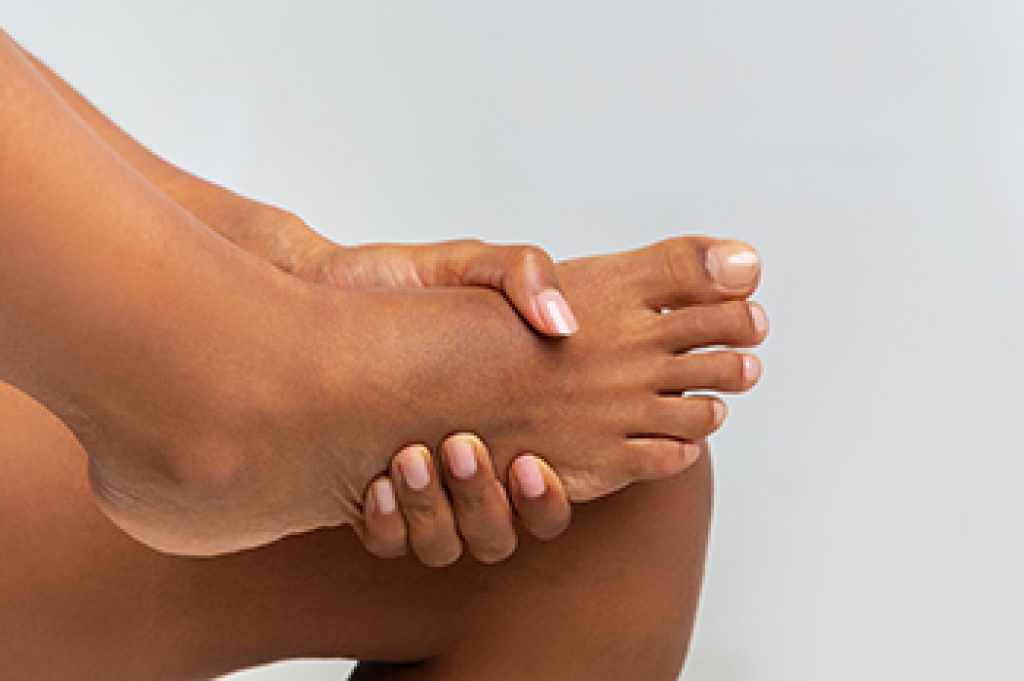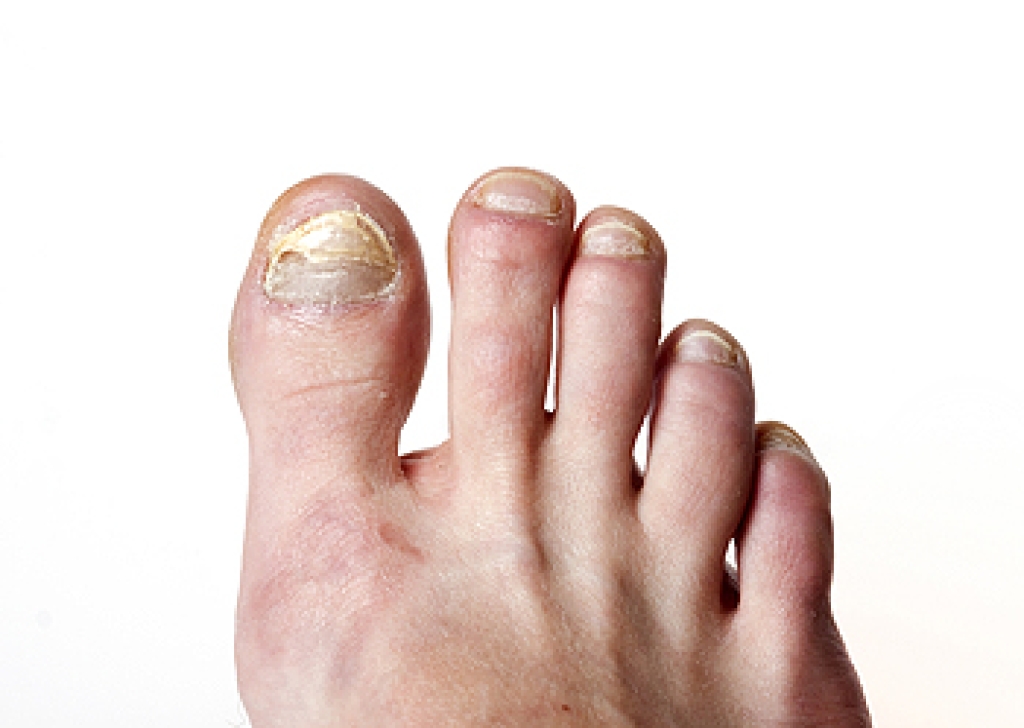Blog
Causes of Top of the Foot Pain

Pain on the top of your feet can be uncomfortable and debilitating, affecting your daily activities and quality of life. This type of foot pain can be caused by a variety of factors, including stress fractures, ganglion cysts, osteoarthritis, tarsal fusion, and trauma. Stress fractures are tiny cracks in the bones that are often the result of overuse, especially when there is a sudden increase in physical activity. A ganglion cyst is a fluid-filled capsule near joints or tendons that can cause pain when it presses against nerves. Osteoarthritis can cause an arch collapse that leads to top-of-foot pain, particularly if linked to toe joints. Tarsal coalition is a fusion of foot bones in young individuals, resulting in stiffness, flat feet, and pain on top of the foot. Tendonitis is the Inflammation of tendons, often affecting the tibialis anterior tendon, which can cause localized pain on the top of the foot that is worsened by activity. Trauma includes any foot injury, such as fractures, sprains, or impact, that can lead to top-of-foot pain. If you are experiencing persistent pain on the top of your foot, it is suggested that you make an appointment with a chiropodist who can provide a thorough evaluation and recommend the most appropriate treatment for your specific condition.
Foot pain is a common problem treated by chiropodists. If you have foot pain, please consult with one of the specialists from Thornhill Foot Clinic. Our chiropodists can help you maintain the health of your lower limbs and your mobility.
When you are experiencing foot pain, it’s important to note the type of pain and its location, as this can help determine a diagnosis.
Pain in the top of the foot may be caused by:
- Stress fractures
- Sinus tarsi syndrome
- Extensor tendonitis
- Tibialis anterior tendonitis
- Gout
- Athlete’s foot
- Ganglion cysts
Pain in the bottom of the foot may be caused by:
- Plantar fasciitis
- Foot cramps
- Tarsal tunnel syndrome
- Plantar fibromatosis
- Posterior tibial tendonitis
- Stress fractures
- Flat feet
Pain on the side of the foot may be caused by:
- Ankle sprain
- Cuboid syndrome
- Peroneal tendonitis
- Stress fractures
- Bunions
- Corns or calluses
- Posterior tibial tendonitis
Heel pain may be caused by:
- Plantar fasciitis
- Achilles tendonitis
- Bone spurs
- Heel fractures
- Retrocalcaneal bursitis
- Sever’s disease
Pain in the toes may be caused by:
- Gout
- Hammertoe
- Turf toe
- Bunions
- Ingrown toenails
- Blisters
- Arthritis
These and many more conditions can be treated by a chiropodist. If you have any questions, please feel free to contact our office located in . We offer the newest diagnostic and treatment technologies for all your foot care needs.
Potential Foot Problems Caused by Wearing Flip Flops

Summertime calls for laid-back footwear, and flip-flops have long been a popular choice for their simple and stylish appeal. However, beneath the relaxed vibes, frequently wearing flip-flops can take a toll on our feet. Wearing these types of shoes may lead to a range of foot problems. These flat, open-toed sandals offer minimal arch support and cushioning, leading to issues like arch pain, plantar fasciitis, and possibly stress fractures. The lack of straps can cause the toes to grip the sole tightly, potentially leading to conditions such as hammertoes and calluses. While flip-flops are convenient and attractive, it is vital to acknowledge the potential harm they may pose to our foot health. If you choose to wear flip flops during the majority of the summer months, it is suggested that you consult a chiropodist who can guide you toward additional stylish shoes to wear which can help to protect your foot health.
Flip-flops, though they may seem harmless, are bad for your foot health. If you would like to learn more about the many problems that can be caused by frequent flip-flop wear, please consult with one of the specialists from Thornhill Foot Clinic. Our chiropodists can help you maintain the health of your lower limbs and your mobility.
Flip-flops are the quintessential summer shoe, seemingly perfect for the beach or pool. Unfortunately, these flimsy shoes are not a good choice when it comes to keeping your feet healthy.
Frequently wearing flip-flops is associated with:
- Hammertoes
- Bunions
- Plantar fasciitis
- Heel spurs
- Cracked heels
- Plantar warts
- Athlete’s foot
- Foot pain
- Foot and ankle injuries
- Gait changes
- Leg, hip, and back pain
The best way to avoid these issues is to swap your flip-flops for more protective and supportive shoes. If you must wear flip-flops, wear them only for short periods of time.
If you have any questions, please feel free to contact our office located in . We offer the newest diagnostic and treatment technologies for all your foot care needs.
Scleroderma and the Feet

Scleroderma is a rare, chronic autoimmune disease affecting skin and internal organs. It stems from immune system-induced inflammation and tissue changes, often resulting in skin tightening and thickening. It can also affect joints, muscles, and various organs such as the heart, lungs, kidneys, blood vessels, or intestines. While predominantly affecting women aged 30 to 50, children can develop a juvenile form of scleroderma. There is no cure for this disease, however symptom management and improved quality of life are achievable through treatment. Signs and symptoms of scleroderma vary, from minor to life-threatening. One early indicator is Raynaud's phenomenon, characterized by color changes in toes due to cold exposure. Patients may experience red, white, or blue toes, along with swelling, numbness, pain, or ulcers. Other symptoms arise depending on organ involvement, requiring diagnostic assessments like blood tests, autoantibody detection, and imaging. Treatment options include medications for improving circulation in Raynaud's disease and addressing skin thickening and organ complications. Lifestyle adjustments, such as staying warm and protecting extremities, can enhance comfort. If you have scleroderma and it is causing you pain or affecting your mobility, it is strongly suggested that you make an appointment with a chiropodist for treatment that can help you live more comfortably.
Systemic diseases are medical problems that affect the entire body. Many systemic diseases can bring about foot and ankle problems. If you have a systemic disease that affects your lower limbs, please consult with one of the specialists from Thornhill Foot Clinic. Our chiropodists can help you maintain the health of your lower limbs and your mobility.
Which systemic diseases can affect the feet?
- Peripheral artery disease - Causes inadequate blood flow to the lower limbs
- Peripheral neuropathy - Nerve damage in the nerves that supply the feet and ankles
- Diabetes - Can cause nerve damage, poor circulation, and a weakened immune system that can lead to the formation of poorly healing wounds on the feet
- Arthritis - A disease of the joints that damages joint lining, it often affects the small joints of the feet and the ankle joints
- Gout - A build up of uric acid in the bloodstream that forms crystals that can lodge in the joints
How can a chiropodist help?
Chiropodists help people who have systemic disease manage and maintain their foot health in a variety of ways. They can diagnose a multitude of foot and ankle problems, screen for certain systemic conditions, teach patients about proper foot care, and provide information about preventive strategies that patients could employ to avoid complications from their systemic diseases. Chiropodists can also treat foot and ankle problems through medications, foot and ankle exercises, orthotics, and lifestyle recommendations, among many other potential treatments
If you are living with a systemic illness that impacts your foot health, please feel free to contact our office located in . We offer the newest diagnostic and treatment technologies for all your foot care needs.
Symptoms and Diagnosis of Toenail Fungus

Toenail fungus, known as onychomycosis, is a condition that affects millions of people worldwide. It occurs when a living fungus infiltrates the nail and feeds on its keratin. This leads to noticeable changes in the nail's appearance. The primary culprits behind fungal toenail infections are dermatophytes, although yeasts and molds can also be responsible. These fungi thrive in warm, moist environments, making communal showers, public changing rooms, and shared footwear common sources of infection. Superficial infections may appear as slight streaks or spots and are relatively simple to treat. But as the infection progresses, burrowing deeper into the nail, traditional creams and lacquers struggle to reach all the affected areas. Deep-acting treatments, such as antifungal laser therapy, are often necessary to clear these stubborn infections. Risk factors for developing toenail fungus include trauma to the nail, poor hygiene, excessive sweating, and working in wet environments. An accurate diagnosis is important, as several nail disorders can mimic fungal infections. A chiropodist can diagnose fungal infections through a physical examination and, if necessary, by sending a nail sample to a lab for confirmation. If you believe you may have a fungal toenail infection, it is suggested that you make an appointment with a chiropodist.
Toenail fungus can be uncomfortable and unsightly. If you have diabetes or a compromised immune system, it may also be dangerous. To learn more about treatment options, please consult with one of the specialists from Thornhill Foot Clinic. Our chiropodists will assess your condition and provide you with quality foot and ankle treatment.
What Does Toenail Fungus Look Like?
A fungal infection of the toenail may cause the affected nail to become thickened, brittle, crumbly, and yellowish or brown in color. Sometimes the toenail may separate from the nail bed, become deformed, emit a foul odor, or cause pain or discomfort.
What Causes Toenail Fungus?
Toenail fungus is caused by a fungus that infects the nail bed. The fungus lives and thrives in warm and moist environments and is also contagious. Athlete’s foot, which is a fungal infection of the skin, may spread to the nails and cause toenail fungus.
What Treatments Are Available?
Potential treatments for toenail fungus may include oral antifungal medications, topical antifungal medications, such as medicated nail polishes that are applied directly to the affected nail, and laser therapy. Sometimes, a combination of treatments is prescribed.
If you have any questions, please feel free to contact our office located in . We offer the newest diagnostic and treatment technologies for all your foot care needs.

